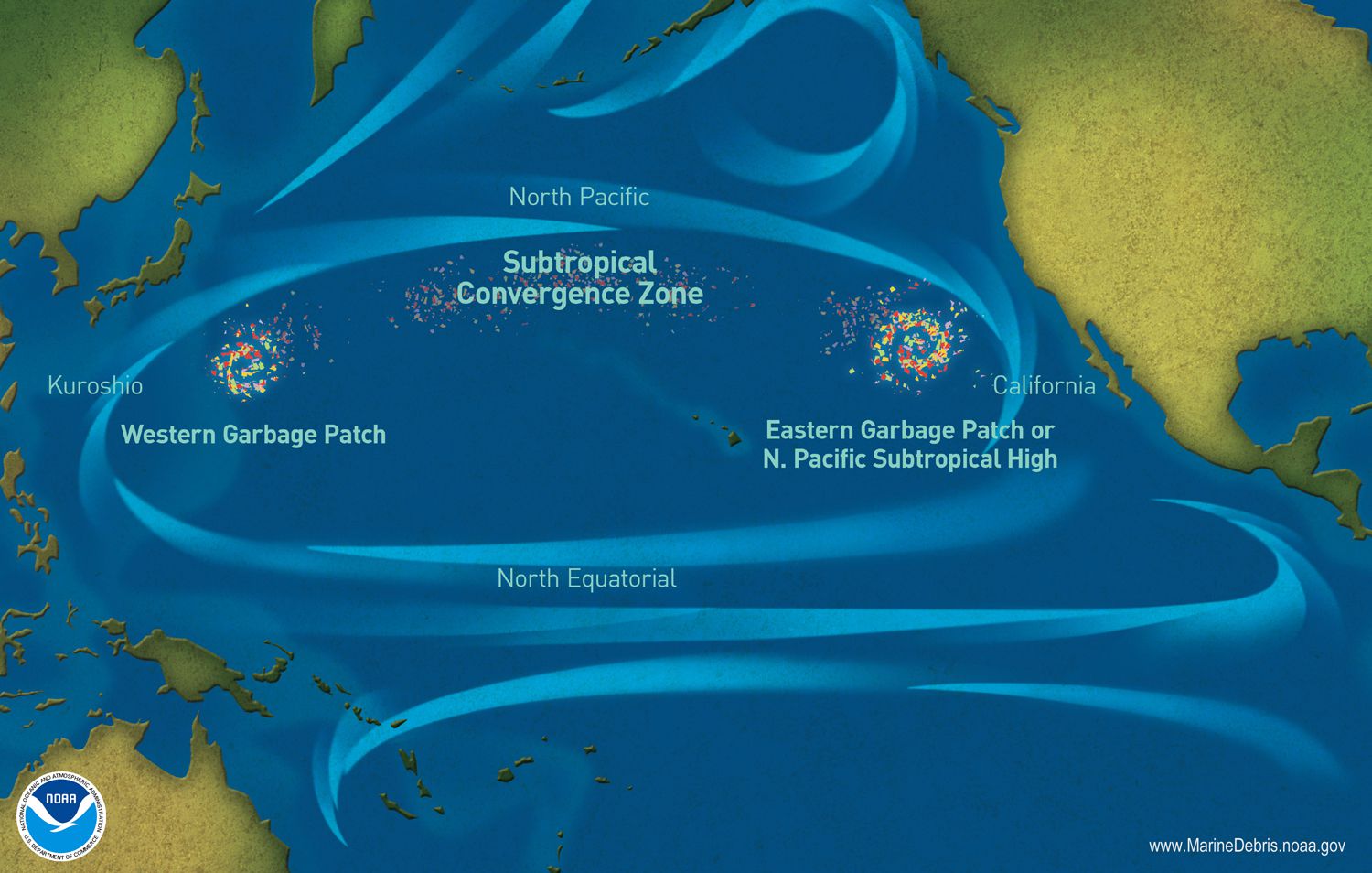20 March 2019
Where do microplastics go in the oceans?
Posted by llester
By Liza Lester
Where do tiny bits of plastic go when they are flushed out to sea?
Previous research finds most plastic ends up in the subtropical ocean gyres circling the mid-latitudes of the Atlantic and Pacific oceans. These rotating currents encircle large areas sometimes called “garbage patches” because they are the destination for so much persistent floating junk.
A new modeling study in AGU’s Journal of Geophysical Research: Oceans finds more microplastic may be reaching Arctic waters than previously thought.
The new study looked at what oceanographers know about ocean currents to ask which types of current are most influential on how microplastics drift.
 Generally defined as plastic bits smaller than 5 millimeters, this durable, non-biodegradable flotsam ranges from the size of polystyrene beads to microscopic nanoparticles small enough to squeeze through cell membranes. They can persist in surface waters for years.
Generally defined as plastic bits smaller than 5 millimeters, this durable, non-biodegradable flotsam ranges from the size of polystyrene beads to microscopic nanoparticles small enough to squeeze through cell membranes. They can persist in surface waters for years.
Microplastics are unhealthy for animals to ingest, causing physical and metabolic damage to sea life, from tiny plankton to whales. Microplastics can also spread chemical pollutants and living organisms carried on their surfaces.
The new simulations of plastics from the millimeter to meter scale show wind-driven surface currents called Ekman currents mostly determine the fate of microplastics in the subtropical gyres.
But the new research also finds ocean waves push microplastics toward the poles. The new research shows Stokes drift, an element of fluid dynamics theory that describes the influence of waves, may have led to underestimation of microplastic pollution in the Arctic in previous studies. Stokes drift is not always included in ocean models and is currently not observed from satellites.


 GeoSpace is a blog on Earth and space science, managed by AGU’s Public Information staff. The blog features posts by AGU writers and guest contributors on all sorts of relevant science topics, but with a focus on new research and geo and space sciences-related stories that are currently in the news.
GeoSpace is a blog on Earth and space science, managed by AGU’s Public Information staff. The blog features posts by AGU writers and guest contributors on all sorts of relevant science topics, but with a focus on new research and geo and space sciences-related stories that are currently in the news.